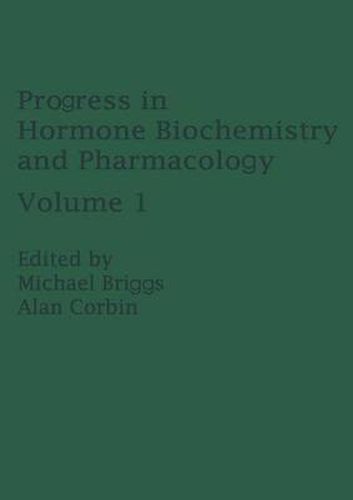Readings Newsletter
Become a Readings Member to make your shopping experience even easier.
Sign in or sign up for free!
You’re not far away from qualifying for FREE standard shipping within Australia
You’ve qualified for FREE standard shipping within Australia
The cart is loading…






This title is printed to order. This book may have been self-published. If so, we cannot guarantee the quality of the content. In the main most books will have gone through the editing process however some may not. We therefore suggest that you be aware of this before ordering this book. If in doubt check either the author or publisher’s details as we are unable to accept any returns unless they are faulty. Please contact us if you have any questions.
Somatostatin was discovered in 1971, by Guillemin and his colleagues during their search for the hypothalamic growth hormone-releasing factor. A peptide was found in ovine hypothalamus which inhibited the release of growth hormone from cultured anterior pituitary cells. 1,2 Determination 3 of its amino acid sequence indicated that it was a tetradecapeptide with a molecular weight of 1639 (Figure lJ. An identical peptide was later isolated from porcine hypothalamus by Schally and his coworkers. 4 The peptide was named somatostatin in the belief that it was a hypothalamic releasing factor whose sole function was to inhibit the secretion of growth hormone. It soon became evident, however, that a peptide with identical immunologic characteristics and biologic activity was present in the D cells of pancreatic islets, in D-like cells of the gastrointestinal tract, in parafollicular cells of the thyroid gland, and in extrahypo thalamic neurons of both the central and peripheral nervous system in various species, including man. Moreover, studies employing synthetic somatostatin5 demonstrated that the peptide possessed a wide spectrum of biologic activities in addition to its inhibition of growth hormone. 56 S 0 MAT 0 S TAT I N 6 1 2 3 4 5 7 Ala-Gly-Cys-Lys-Asn-Phe-Phe I I S Trp 8 ~ L~S 9 I I Cys-Ser-Thr-Phe-Thr 14 13 12 11 10 FIG. 1: Structure of somatostatin 57 II. GENERAL DISTRIBUTION AND ACTIONS Somatostatin is widely distributed within both the central and peripheral nervous systems and in various other tissues (Table 1).
$9.00 standard shipping within Australia
FREE standard shipping within Australia for orders over $100.00
Express & International shipping calculated at checkout
This title is printed to order. This book may have been self-published. If so, we cannot guarantee the quality of the content. In the main most books will have gone through the editing process however some may not. We therefore suggest that you be aware of this before ordering this book. If in doubt check either the author or publisher’s details as we are unable to accept any returns unless they are faulty. Please contact us if you have any questions.
Somatostatin was discovered in 1971, by Guillemin and his colleagues during their search for the hypothalamic growth hormone-releasing factor. A peptide was found in ovine hypothalamus which inhibited the release of growth hormone from cultured anterior pituitary cells. 1,2 Determination 3 of its amino acid sequence indicated that it was a tetradecapeptide with a molecular weight of 1639 (Figure lJ. An identical peptide was later isolated from porcine hypothalamus by Schally and his coworkers. 4 The peptide was named somatostatin in the belief that it was a hypothalamic releasing factor whose sole function was to inhibit the secretion of growth hormone. It soon became evident, however, that a peptide with identical immunologic characteristics and biologic activity was present in the D cells of pancreatic islets, in D-like cells of the gastrointestinal tract, in parafollicular cells of the thyroid gland, and in extrahypo thalamic neurons of both the central and peripheral nervous system in various species, including man. Moreover, studies employing synthetic somatostatin5 demonstrated that the peptide possessed a wide spectrum of biologic activities in addition to its inhibition of growth hormone. 56 S 0 MAT 0 S TAT I N 6 1 2 3 4 5 7 Ala-Gly-Cys-Lys-Asn-Phe-Phe I I S Trp 8 ~ L~S 9 I I Cys-Ser-Thr-Phe-Thr 14 13 12 11 10 FIG. 1: Structure of somatostatin 57 II. GENERAL DISTRIBUTION AND ACTIONS Somatostatin is widely distributed within both the central and peripheral nervous systems and in various other tissues (Table 1).